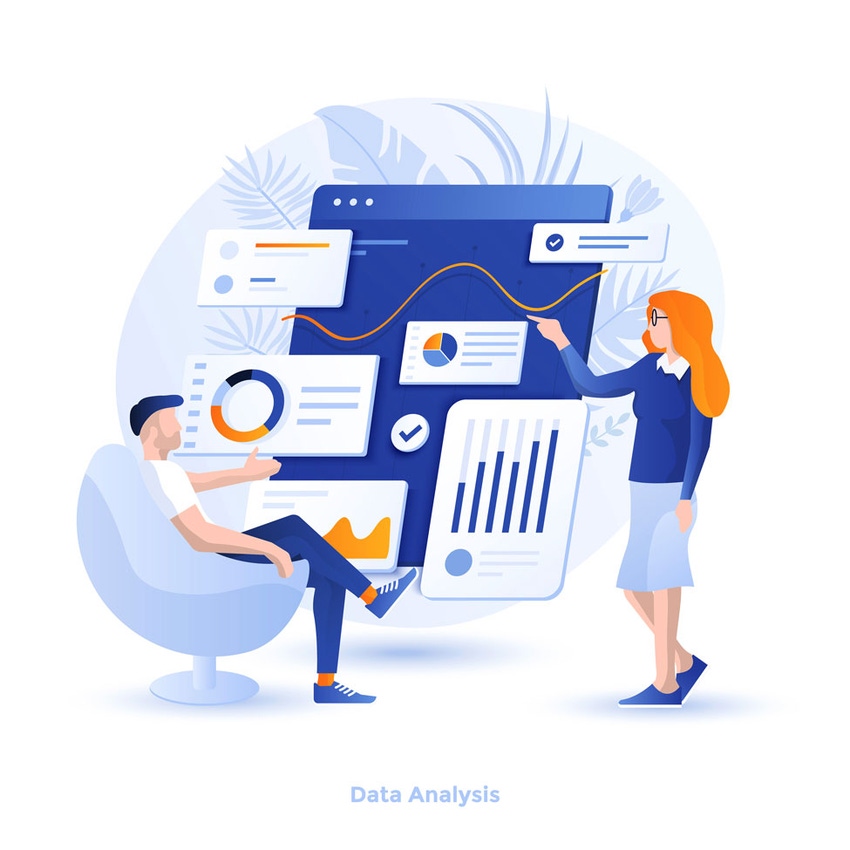Tailoring Analytics Dashboards For Business Using Machine Learning
March 27, 2019

by Jelani Harper
SAN FRANCISCO - The manifold disciplines, skills, and competencies comprising data science may yield the most tangible return when applied to business users.
Regardless of how varied this field of data management is, the capacity to manipulate data to help the business perform better is predicated on three integral components: dashboards, timely data integrations, and predictive analytics.
The ability to tailor data science to provide consistently viable predictive information—as opposed to that which is just static—stems from the artful interweaving of these three elements. “In a very straightforward way, you can go from having data to making it available both in its raw form or in a form in which data is used to predict probabilities, classes, regression outputs, and then make that also available as part of the dashboard output,” explains Syncfusion Vice President Daniel Jebaraj.
Related: Incorporating machine learning into a successful data strategy
Predictive visualizations, dynamic dashboard metrics
The foremost way in which data science positively impacts business users is in augmenting that most time-honored of business tools - dashboards - with predictive capabilities.
Thus, users are able to reap the benefit of both static KPIs, as well as predictions based on data that’s coming in. The crux of imbuing dashboards tailored around business metrics with predictive capabilities is to expose machine learning models to the outputs of dashboards.
The result is practical business value not just about what is happening, but what is most likely to in the very near future.
"Users may be tracking KPIs and visualizing them on the dashboard; at the same time, they want to use kind of what-if scenarios or predict the future for the next three months or the next six months," Jebaraj says. He explains that visualizing the output of machine learning models using dashboards brings business metrics to life, transfiguring KPIs such as the likelihood of defaulting on a payment. "All these things are becoming part of KPIs. Not just using static metrics, but also relying on past data and making intelligent predictions."
Data integrations and model training
The ability to swiftly integrate and aggregate data is critical to rapidly serving business users with data science outputs.
Although integration platforms for this dimension of data science are unequivocally horizontal, some of the most relevant use cases pertain to areas of finance. Financial organizations require a variety of sources with which to determine their return on investment, their capital investment, as well as calculations related to how much money they're spending, how much they're taking in, and how this compares with internal projections.
Integration platforms are then assisted by machine learning analytics for determining how best to integrate data according to schema and other facets of transformation.
Conversely, integration platforms of big data scale are also useful for training machine learning models and validating their results for predictive analytics used on dashboards. Such intuitive solutions enable users to visually drag and drop, and then incorporate the results of training through a batch process every 15 minutes or every half an hour and then output the results of that model and make it available for consumption within the dashboard, Jebaraj explains.
For example, organizations can leverage these integration mechanisms for use cases such as a healthcare one in which an organization uses predictive analytics models to display right on the dashboard the probability of default with either groups of people, or individual customers for repayment of healthcare services.
Related: AI makes for intelligent banking
Streamlining predictive model logistics
Employing existing libraries of machine learning models for predictions relevant to business domains can doubtlessly assist business users in productively leveraging dynamic metrics dashboards.
According to Jebaraj, the sorts of predictive models found in competitive libraries include random forest, neural networks, clustering models and more. One of the primary benefits of training, testing, and validating models from pre-existent libraries—as opposed to creating them oneself using frameworks such as R or Python—is that the deployment environment and the training environment are usually completely different. "It’s fairly cumbersome for customers to take the training environment and then deploy it in their actual production environment,” adds Jebaraj.
By using models already existent in libraries, organizations can expedite this aspect of data science since “they don’t have to worry about configuring the training environment, whether it’s SAS or R or Python, and figuring out how to get it to work in their deployment environment,” Jebaraj notes. “This really sits in their execution context within their deployment environment. It’s simple to scale and deploy in whatever fashion they choose.”
Data science for the business
The machine learning models so influential to modern predictive analytics are an eminent component of data science today.
By combining these models with graphically pleasing visualizations and dashboards, the power of data science is naturally extended to the business. Business users can keep track of and predict metrics to optimize their performance.
Both the foregoing dashboards and predictive analytics capabilities are underpinned by timely data integrations, all of which continue to feed one another in a virtuous cycle of data science for peerless business insight.
Jelani Harper is an editorial consultant servicing the information technology market, specializing in data-driven applications focused on semantic technologies, data governance and analytics.
About the Author(s)
You May Also Like


.jpg?width=700&auto=webp&quality=80&disable=upscale)
.jpg?width=700&auto=webp&quality=80&disable=upscale)
.jpg?width=700&auto=webp&quality=80&disable=upscale)


.jpg?width=300&auto=webp&quality=80&disable=upscale)

.jpg?width=300&auto=webp&quality=80&disable=upscale)